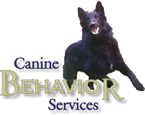
Using Food Rewards: Let the Reward Fit the Task
Certain behaviors come naturally to dogs, and are easily motivated. Most retrieving breeds can easily be taught to fetch, for example. But not all behaviors that we want to teach our dogs come naturally to them. Coming when called, especially when it means leaving some exciting smell or activity, is an example of a task that does not come easily to the majority of dogs. One proven way to speed up the training process is to "pay" your dog for desirable behavior. However, it's not just a matter of using food treats or not - one important consideration is that a more difficult task requires more motivation and a better reward.
What types of things are more difficult for dogs? Of course, to a degree, this depends on the dog! They are individuals, just like us. Dogs of the same breed -even within the same litter - can have very different strengths, weaknesses, interests, and challenges. But, as far as a general rules go:
- Brand new tasks require more motivation and reward. So do tasks the dog has learned at home, that you are now taking "on the road". For example, a dog that does a beautiful sit-stay in your kitchen, for praise and the occasional piece of cracker, may initially need a much higher-value reward to do the same sit-stay on your evening walk around the neighborhood.
- Add distractions - cars driving by, kids riding bikes, neighbor dogs barking - and the need for a even better reward becomes that much stronger.
- The types of distraction that a dog finds difficult varies by also by breed. For instance, terriers typically require more motivaton to keep thinking and listening around high-pitched, prey-like sounds. Herding breeds will need "extra help" learning to pay attention and control themselves around people, animals, and objects that move quickly. Guarding breeds may need higher-value rewards when first exposed to practicing obedience in situations with strangers coming and going.
- Age also plays a role: while young pups tend to take distractions in stride, teenage pups (6 months to 18 months, depending on breed) are, much like human teenagers, more impulsive - again, requiring a little extra motivational support to realize that they can still do the job.
What types of food rewards are best? Again, this does depend on the dog. I have a dog who will do backflips (well, almost) for tiny pieces of gingersnap cookie, or little cubes of cornbread. My other dogs, however, think she's crazy! While it always pays to know your own dog, the following are suggestions to get you thinking, for low, medium, and high value food rewards:
- Low value (perfectly good for quick rewards for well-learned tasks that your dog can now do easily): Goldfish crackers, cheerios, fruit loops, oyster crackers, small pieces of dry dog biscuit, your dog's kibble (assuming he likes his kibble), cubes of leftover bread or cornbread, baby carrot pieces, popcorn.
- Medium value (good for new tasks in familiar environments, and learned tasks that still require a bit of concentration from your dog): tiny pieces of cheese, commercial dog treats such as Snausages, Puperoni, etc, cooked pasta (many dogs enjoy cheese tortellini), cut up hot dogs (either as is, or microwaved after cutting).
- High value (for tasks that do not come naturally to your dog, for high-level distractions, for practicing in brand new envirnoments, for youngsters going through impulsive, distractable stages, and for any behavior for which you wish to maintain strong enthusiasm): leftover steak or roast, leftover chicken bits, boiled or baked beef or chicken liver, homemade liver treats, tiny spoonfuls of meat baby food, bits of liverwurst.
Some considerations and cautions:
- Treat rewards should be very small in size - pea-sized is good for most dogs. The idea is to give a tiny "praise bonus", not feed your dog an extra meal!
- Be aware of any allergies or intolerances your dog may have when choosing treats. If your dog has a wheat allergy, for example, obviously you won't want to use crackers or pasta as treats.
- If you are training a lot, be aware of the quantity of treats your dog is receiving, and adjust the amount of regular diet if necessary.
- Avoid food rewards that contain onion and onion powder, as onions cause a very dangerous type of anemia in some dogs. Do not feed grapes, raisins, chocolate, or foods sweetened with xylitol to your dog, as these all can be highly toxic to canines.
- Whenever possible, I prefer to use real food as treats, versus commercial products, to keep chemicals, salt, sugar, and other unneccesary - and potentially unhealthy - ingredients to a minimum.
Have fun this week experimenting with what food rewards motivate your dog. And until next week, Happy Training!
julie
Julie Cantrell BSc, CPDT-KA, CDBC
Canine Behavior Services
www.k9behaviorservices.com |

